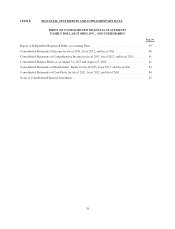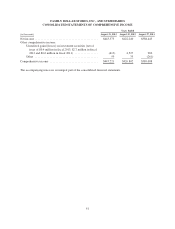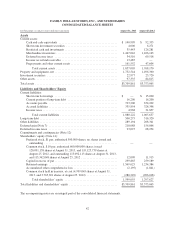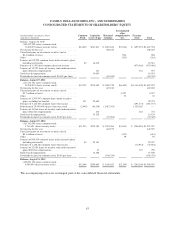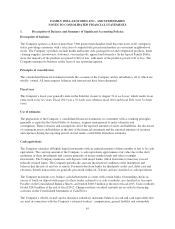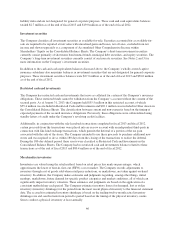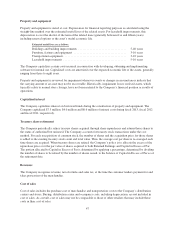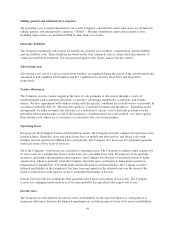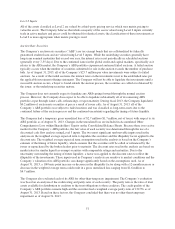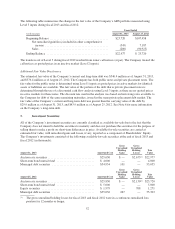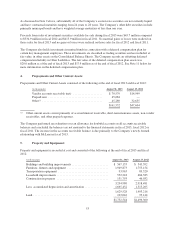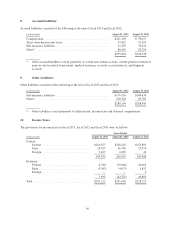Family Dollar 2013 Annual Report Download - page 51
Download and view the complete annual report
Please find page 51 of the 2013 Family Dollar annual report below. You can navigate through the pages in the report by either clicking on the pages listed below, or by using the keyword search tool below to find specific information within the annual report.
Property and equipment
Property and equipment is stated at cost. Depreciation for financial reporting purposes is calculated using the
straight-line method over the estimated useful lives of the related assets. For leasehold improvements, this
depreciation is over the shorter of the term of the related lease (generally between five and fifteen years)
including renewal options or the asset’s useful economic life.
Estimated useful lives are as follows:
Buildings and building improvements ................................. 5-40 years
Furniture, fixtures and equipment .................................... 3-10 years
Transportation equipment ........................................... 3-10 years
Leasehold improvements ........................................... 5-10 years
The Company capitalizes certain costs incurred in connection with developing, obtaining and implementing
software for internal use. Capitalized costs are amortized over the expected economic life of the assets, generally
ranging from three to eight years.
Property and equipment is reviewed for impairment whenever events or changes in circumstances indicate that
the carrying amount of an asset may not be recoverable. Historically, impairment losses on fixed assets, which
typically relate to normal store closings, have not been material to the Company’s financial position or results of
operations.
Capitalized interest
The Company capitalizes interest on borrowed funds during the construction of property and equipment. The
Company capitalized $7.3 million, $4.0 million and $0.6 million of interest costs during fiscal 2013, fiscal 2012
and fiscal 2011, respectively.
Treasury share retirement
The Company periodically retires treasury shares acquired through share repurchases and returns those shares to
the status of authorized but unissued. The Company accounts for treasury stock transactions under the cost
method. For each reacquisition of common stock, the number of shares and the acquisition price for those shares
is added to the existing treasury stock count and total value. Thus, the average cost per share is re-averaged each
time shares are acquired. When treasury shares are retired, the Company’s policy is to allocate the excess of the
repurchase price over the par value of shares acquired to both Retained Earnings and Capital in Excess of Par.
The portion allocated to Capital in Excess of Par is determined by applying a percentage, determined by dividing
the number of shares to be retired by the number of shares issued, to the balance of Capital in Excess of Par as of
the retirement date.
Revenues
The Company recognizes revenue, net of returns and sales tax, at the time the customer tenders payment for and
takes possession of the merchandise.
Cost of sales
Cost of sales includes the purchase cost of merchandise and transportation costs to the Company’s distribution
centers and stores. Buying, distribution center and occupancy costs, including depreciation, are not included in
cost of sales. As a result, cost of sales may not be comparable to those of other retailers that may include these
costs in their cost of sales.
47



